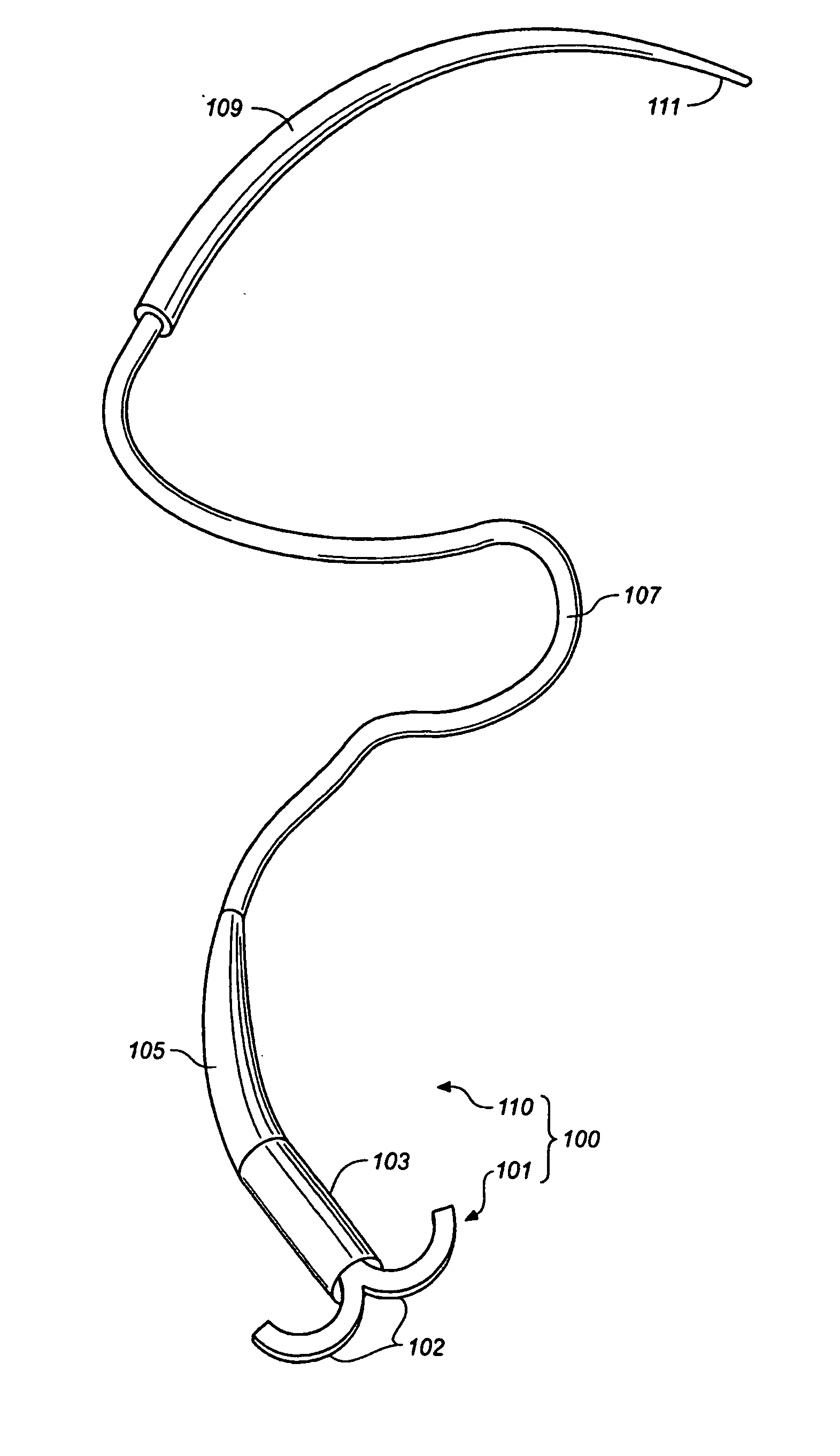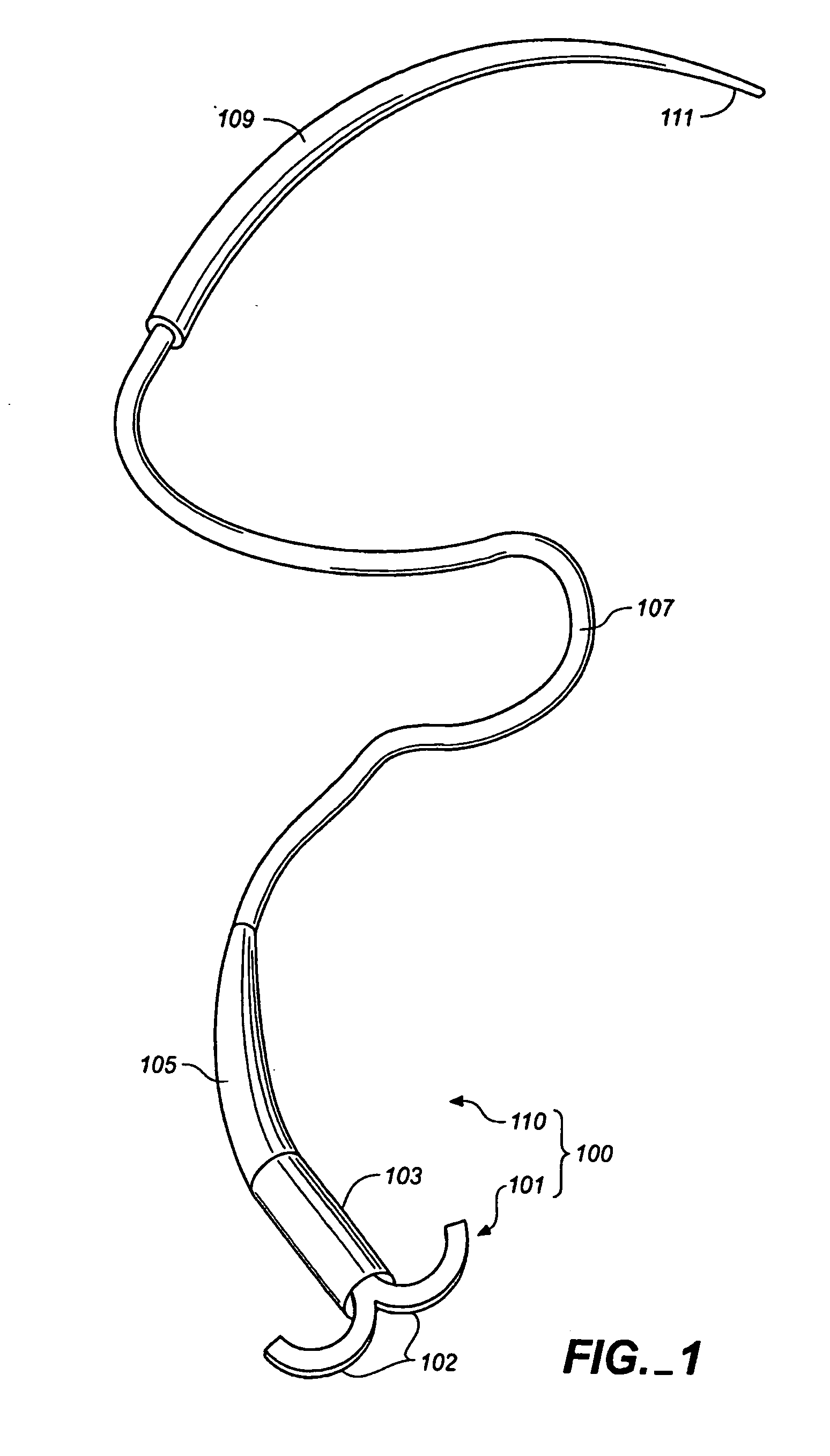Self-closing surgical clip for tissue
a tissue and surgical technology, applied in the field of tissue sealing devices and methods, can solve the problems of difficulty in performing arterial replacement or bypass grafting, difficulty in constructing an arterial anastomosis, and almost a technical impossibility using minimally invasive techniques, so as to facilitate interrupted anastomosis, promote intima-to-intima contact, and reduce the contact between intraluminal metallic components
- Summary
- Abstract
- Description
- Claims
- Application Information
AI Technical Summary
Benefits of technology
Problems solved by technology
Method used
Image
Examples
Embodiment Construction
[0042] Referring now to the drawings, and first to FIG. 1, a tissue connector assembly constructed according to the principles of the present invention is shown and generally indicated with reference numeral 100. The tissue connector assembly 100 may be used to manipulate and align tissues, or tissue and graft with respect to each other and thereafter connect the tissues together (FIGS. 6-8). As used herein, the term graft includes any of the following: homografts, xenografts, allografts, alloplastic materials, and combinations of the foregoing. The tissue connector assembly and connectors of the present invention are generally useful for attaching tissues and, as will become apparent upon reflection of the present disclosure, can be used for a variety of medical procedures or can be modified within the scope of the present invention to perform such procedures. Thus the tissue connector assembly 100 may be used as illustrated in FIGS. 7, 8 and 9 in vascular surgery to replace or byp...
PUM
 Login to View More
Login to View More Abstract
Description
Claims
Application Information
 Login to View More
Login to View More - R&D
- Intellectual Property
- Life Sciences
- Materials
- Tech Scout
- Unparalleled Data Quality
- Higher Quality Content
- 60% Fewer Hallucinations
Browse by: Latest US Patents, China's latest patents, Technical Efficacy Thesaurus, Application Domain, Technology Topic, Popular Technical Reports.
© 2025 PatSnap. All rights reserved.Legal|Privacy policy|Modern Slavery Act Transparency Statement|Sitemap|About US| Contact US: help@patsnap.com



